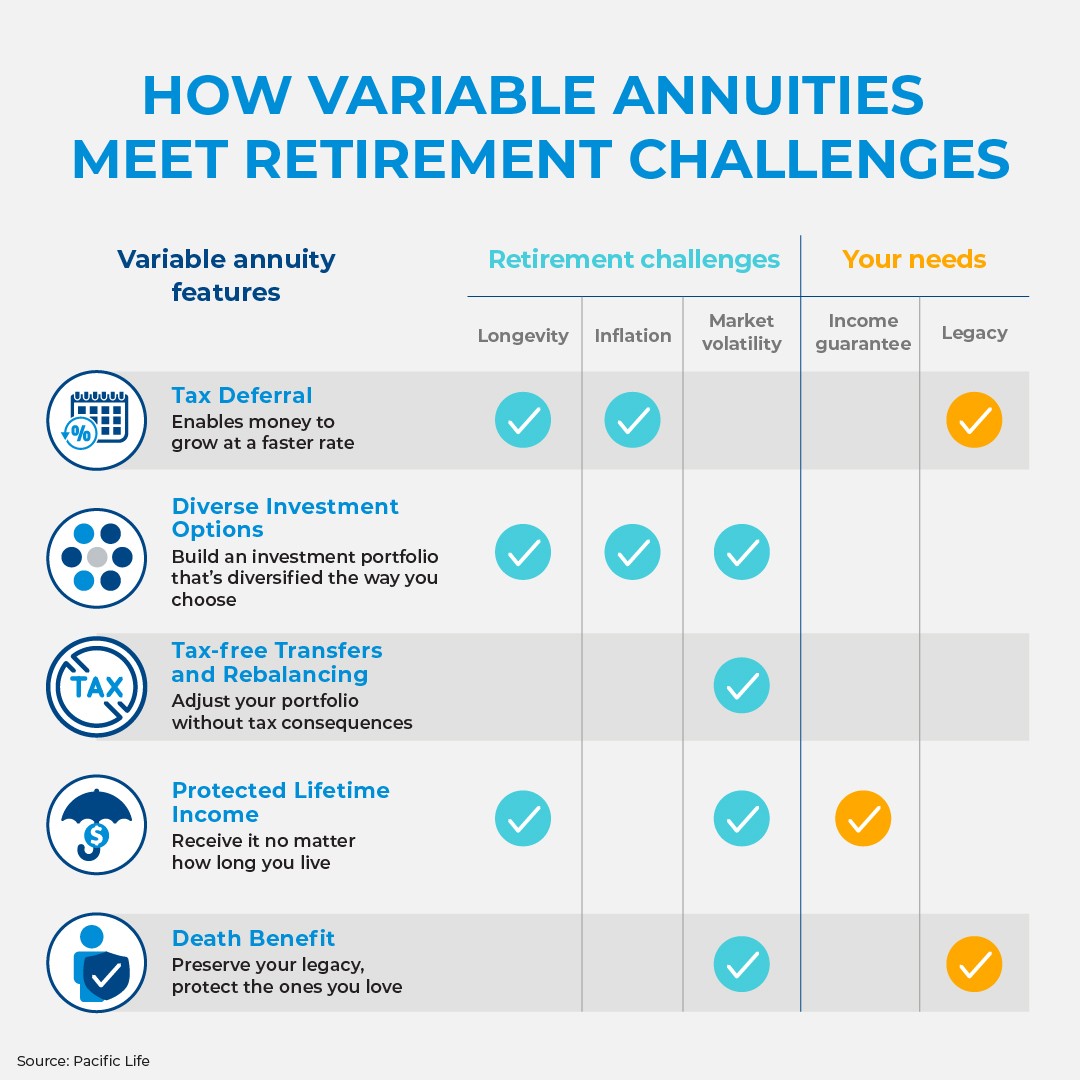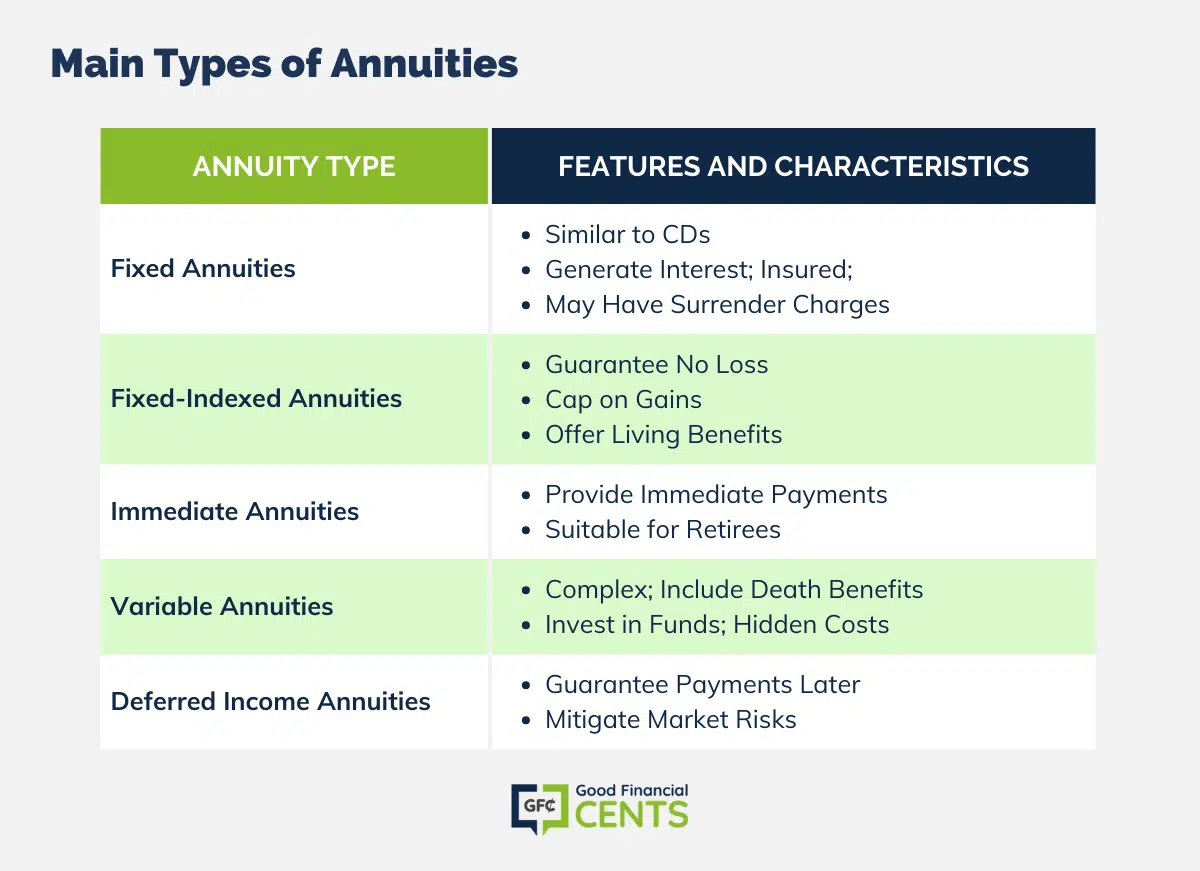All Categories
Featured
Table of Contents
Simply as with a taken care of annuity, the proprietor of a variable annuity pays an insurance firm a swelling amount or series of payments in exchange for the assurance of a collection of future settlements in return. But as discussed above, while a dealt with annuity expands at an ensured, continuous rate, a variable annuity expands at a variable price that relies on the efficiency of the underlying financial investments, called sub-accounts.

During the buildup phase, possessions purchased variable annuity sub-accounts grow on a tax-deferred basis and are taxed just when the agreement proprietor takes out those incomes from the account. After the accumulation phase comes the revenue phase. Over time, variable annuity assets should in theory boost in value until the agreement proprietor chooses he or she wish to begin taking out money from the account.
The most substantial concern that variable annuities normally present is high expense. Variable annuities have a number of layers of charges and expenditures that can, in accumulation, create a drag of approximately 3-4% of the agreement's value every year. Below are one of the most usual costs related to variable annuities. This cost makes up the insurance provider for the threat that it assumes under the terms of the agreement.
Analyzing Strategic Retirement Planning Key Insights on Your Financial Future What Is the Best Retirement Option? Advantages and Disadvantages of Indexed Annuity Vs Fixed Annuity Why Choosing the Right Financial Strategy Can Impact Your Future How to Compare Different Investment Plans: A Complete Overview Key Differences Between Fixed Vs Variable Annuities Understanding the Rewards of Fixed Interest Annuity Vs Variable Investment Annuity Who Should Consider Strategic Financial Planning? Tips for Choosing the Best Investment Strategy FAQs About Fixed Interest Annuity Vs Variable Investment Annuity Common Mistakes to Avoid When Planning Your Retirement Financial Planning Simplified: Understanding Your Options A Beginner’s Guide to Fixed Annuity Vs Equity-linked Variable Annuity A Closer Look at How to Build a Retirement Plan
M&E cost charges are calculated as a percentage of the contract worth Annuity companies hand down recordkeeping and other management expenses to the agreement owner. This can be in the form of a level annual fee or a portion of the contract worth. Administrative charges may be included as part of the M&E threat cost or might be evaluated individually.
These charges can range from 0.1% for easy funds to 1.5% or even more for actively handled funds. Annuity contracts can be customized in a number of methods to serve the particular needs of the contract proprietor. Some common variable annuity riders include assured minimum accumulation benefit (GMAB), assured minimum withdrawal advantage (GMWB), and assured minimum income advantage (GMIB).

Variable annuity payments provide no such tax deduction. Variable annuities often tend to be highly ineffective automobiles for passing riches to the next generation because they do not enjoy a cost-basis change when the original contract proprietor dies. When the owner of a taxable investment account passes away, the expense bases of the investments kept in the account are gotten used to mirror the market costs of those investments at the time of the proprietor's fatality.
Breaking Down Your Investment Choices Key Insights on Your Financial Future Breaking Down the Basics of Investment Plans Features of Smart Investment Choices Why Variable Vs Fixed Annuities Matters for Retirement Planning Choosing Between Fixed Annuity And Variable Annuity: Simplified Key Differences Between Variable Vs Fixed Annuity Understanding the Key Features of Long-Term Investments Who Should Consider Strategic Financial Planning? Tips for Choosing the Best Investment Strategy FAQs About Immediate Fixed Annuity Vs Variable Annuity Common Mistakes to Avoid When Planning Your Retirement Financial Planning Simplified: Understanding Your Options A Beginner’s Guide to Smart Investment Decisions A Closer Look at How to Build a Retirement Plan
Therefore, beneficiaries can inherit a taxable investment profile with a "clean slate" from a tax obligation perspective. Such is not the situation with variable annuities. Investments held within a variable annuity do not obtain a cost-basis change when the initial owner of the annuity passes away. This means that any collected latent gains will certainly be handed down to the annuity owner's successors, in addition to the associated tax obligation worry.
One significant problem connected to variable annuities is the potential for disputes of interest that may exist on the part of annuity salespeople. Unlike a monetary expert, that has a fiduciary responsibility to make financial investment decisions that benefit the client, an insurance broker has no such fiduciary commitment. Annuity sales are extremely lucrative for the insurance policy professionals who offer them due to the fact that of high ahead of time sales payments.

Many variable annuity contracts contain language which positions a cap on the percentage of gain that can be experienced by certain sub-accounts. These caps avoid the annuity owner from completely joining a portion of gains that can otherwise be enjoyed in years in which markets generate substantial returns. From an outsider's viewpoint, presumably that capitalists are trading a cap on investment returns for the abovementioned assured floor on investment returns.
As noted over, surrender costs can drastically restrict an annuity owner's ability to move assets out of an annuity in the early years of the agreement. Further, while most variable annuities allow agreement proprietors to take out a specified quantity throughout the accumulation stage, withdrawals yet amount typically lead to a company-imposed fee.
Withdrawals made from a fixed rate of interest investment option could additionally experience a "market price change" or MVA. An MVA changes the value of the withdrawal to show any type of modifications in rates of interest from the moment that the cash was bought the fixed-rate choice to the time that it was taken out.

On a regular basis, even the salespeople that sell them do not completely comprehend exactly how they function, therefore salesmen in some cases exploit a buyer's feelings to sell variable annuities as opposed to the qualities and suitability of the products themselves. Our company believe that financiers must fully understand what they possess and just how much they are paying to possess it.
Decoding How Investment Plans Work Key Insights on Your Financial Future Breaking Down the Basics of Investment Plans Benefits of Fixed Vs Variable Annuity Pros And Cons Why Choosing the Right Financial Strategy Is Worth Considering Fixed Index Annuity Vs Variable Annuities: A Complete Overview Key Differences Between Different Financial Strategies Understanding the Key Features of Fixed Income Annuity Vs Variable Growth Annuity Who Should Consider Strategic Financial Planning? Tips for Choosing Annuity Fixed Vs Variable FAQs About Planning Your Financial Future Common Mistakes to Avoid When Choosing Tax Benefits Of Fixed Vs Variable Annuities Financial Planning Simplified: Understanding Your Options A Beginner’s Guide to Annuities Variable Vs Fixed A Closer Look at Pros And Cons Of Fixed Annuity And Variable Annuity
The exact same can not be stated for variable annuity possessions held in fixed-rate financial investments. These possessions legally come from the insurer and would as a result go to risk if the company were to fail. Any kind of assurances that the insurance coverage business has actually concurred to offer, such as a guaranteed minimal income advantage, would be in question in the occasion of a company failing.
Possible purchasers of variable annuities should recognize and think about the monetary problem of the releasing insurance policy company before entering right into an annuity contract. While the benefits and downsides of numerous types of annuities can be questioned, the real concern bordering annuities is that of suitability. Simply put, the inquiry is: that should have a variable annuity? This inquiry can be challenging to respond to, given the myriad variants readily available in the variable annuity world, but there are some basic guidelines that can help investors make a decision whether or not annuities ought to play a duty in their financial strategies.
Besides, as the saying goes: "Caveat emptor!" This write-up is prepared by Pekin Hardy Strauss, Inc. Annuities for retirement income. ("Pekin Hardy," dba Pekin Hardy Strauss Wealth Administration) for informational functions only and is not intended as an offer or solicitation for company. The information and information in this short article does not comprise lawful, tax, accountancy, financial investment, or other specialist guidance
Table of Contents
Latest Posts
Understanding Financial Strategies Everything You Need to Know About Fixed Annuity Or Variable Annuity Defining Fixed Vs Variable Annuity Benefits of Fixed Annuity Vs Equity-linked Variable Annuity Wh
Exploring Variable Annuity Vs Fixed Annuity A Closer Look at How Retirement Planning Works Breaking Down the Basics of Choosing Between Fixed Annuity And Variable Annuity Features of Annuities Fixed V
Exploring the Basics of Retirement Options A Closer Look at Fixed Annuity Vs Variable Annuity What Is the Best Retirement Option? Pros and Cons of Various Financial Options Why Deferred Annuity Vs Var
More
Latest Posts